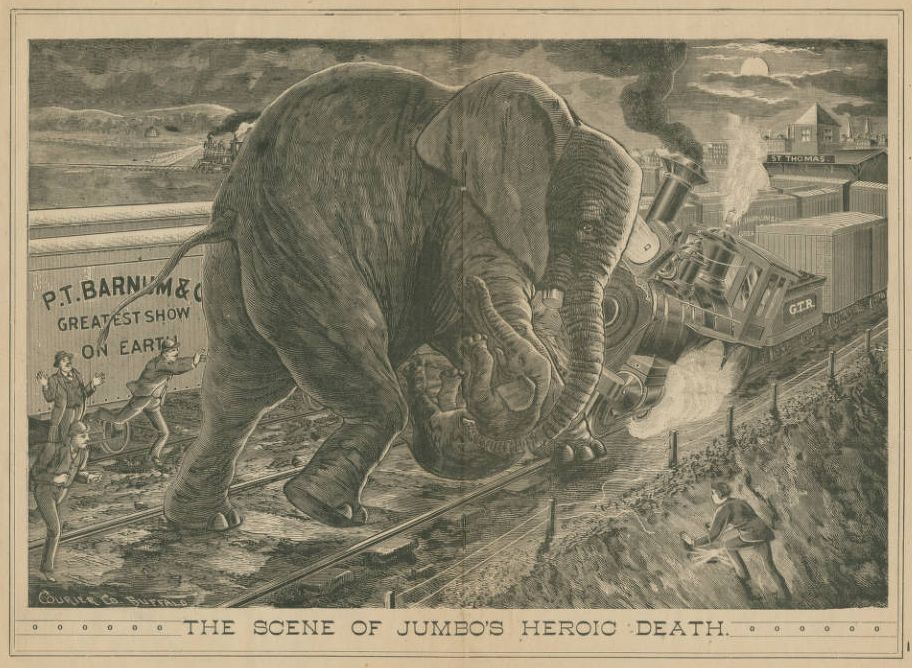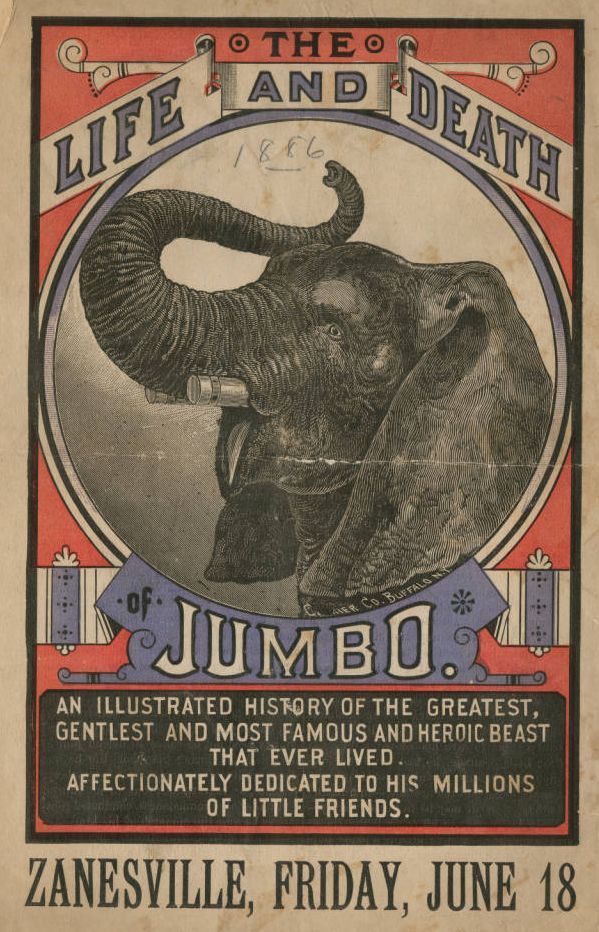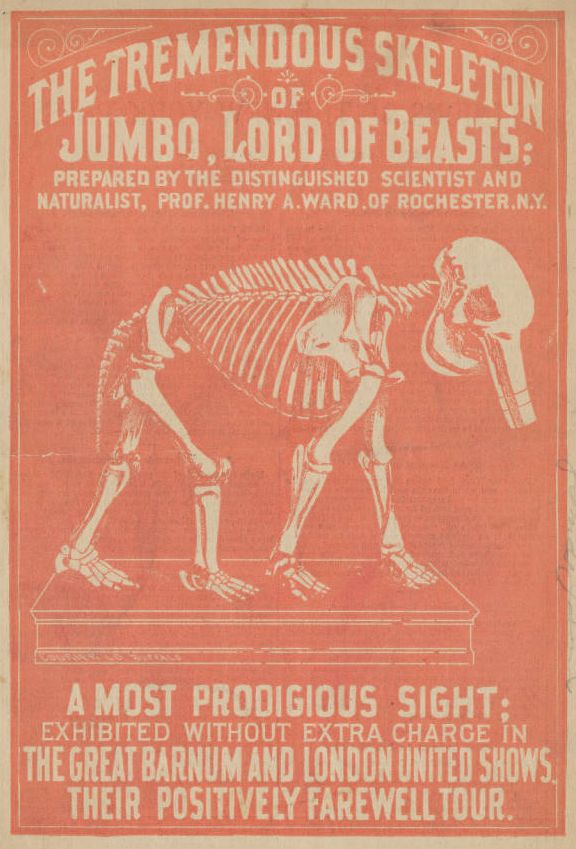“The Greatest, Gentlest, and Most Famous and Heroic Beast That Ever Lived”

Have you heard the news? This month will mark the final performances of the Ringling Bros. and Barnum & Bailey Circus, which has been in operation in various forms for nearly 150 years. The rise of the circus began in the mid-1800s, but over the last century and a half, a shift away from this style of entertainment, combined with concerns over animal welfare and declining ticket sales, has brought this big top era to an end.

One of the figures who loomed large (literally) in the circus world was known as Jumbo the Elephant, and a newly-added item on Ohio Memory shares Jumbo’s story in P.T. Barnum’s typical dramatic fashion. The Life and Death of Jumbo recounts his purchase by Barnum, followed by his journey to America after almost two decades as a fixture in Parisian and London zoos and his unwilling introduction to captivity for the sea voyage.A contemporary article from the Noble County Republican, dated March 30, 1882, confirms the story of Jumbo’s tran-Atlantic travel, reporting that he was “giving his American purchasers considerable trouble. He seems to have strong personal objections to being caged… [and] when last heard from he had protested so strongly as to nearly kill one keeper.” Upon his arrival in the United States, Jumbo was exhibited at Madison Square Gardens in New York City, where “millions flocked to see him, not a single one of whom was disappointed.” In addition to his popular display in New York, Jumbo traveled with the circus to popular acclaim.
The account of Jumbo’s death as written reads like a scene from a movie, when an unexpected train appears on the tracks following a traveling circus performance in St. Thomas, Ontario. Jumbo, “with seeming human intelligence and presence of mind,” turns to escape, but cannot abandon his trainer, Matthew Scott, and his fellow performer, a dwarf elephant named Tom Thumb. According to The Life and Death of Jumbo, Jumbo uses his last moments to fling Tom Thumb to safety with his trunk, before being struck down by the train and killed. While other eyewitness accounts bring into doubt exactly how events unfolded that night, the fact remains that Jumbo’s death made headlines in the news, and deeply affected the public who viewed him with such wonder.

Following his death, Jumbo’s skeleton and taxidermied skin were both mounted and toured as another P.T. Barnum attraction. This publication includes a description from Professor Henry Ward, the naturalist responsible for assembling the skeleton, and seems to have accompanied a tour of the specimen that stopped in Zanesville, Ohio, on June 18, 1886.
Jumbo’s legacy lives on in many ways, including his skeletal remains held by the American Museum of Natural History in New York; his role as the mascot of Tufts University, where his hide was held until it was destroyed by fire in 1975; and the term ‘jumbo’ itself (reported to come from either the Swahili word jambo, meaning “hello,” or jumbe, meaning “chief”), which entered the lexicon thanks to the elephant’s fame. Use of elephants like Jumbo in circus performances has since been recognized as problematic, due in large part to the emergence of animal rights organizations and attendant public reaction throughout the 20th and 21st centuries. One response of Ringling Bros. and Barnum & Bailey was to found the Center for Elephant Conservation in 1995, which now houses the last group of performing elephants from the circus, retired in 2016.
You can learn more about the history of circuses and their connection to Ohio in this 2013 blog post, and explore Ohio Memory to see more material documenting circus acts and their human and animal performers throughout the years!
Thanks to Lily Birkhimer, Digital Projects Coordinator at the Ohio History Connection, for this week’s post!



Leave a Reply
You must be logged in to post a comment.